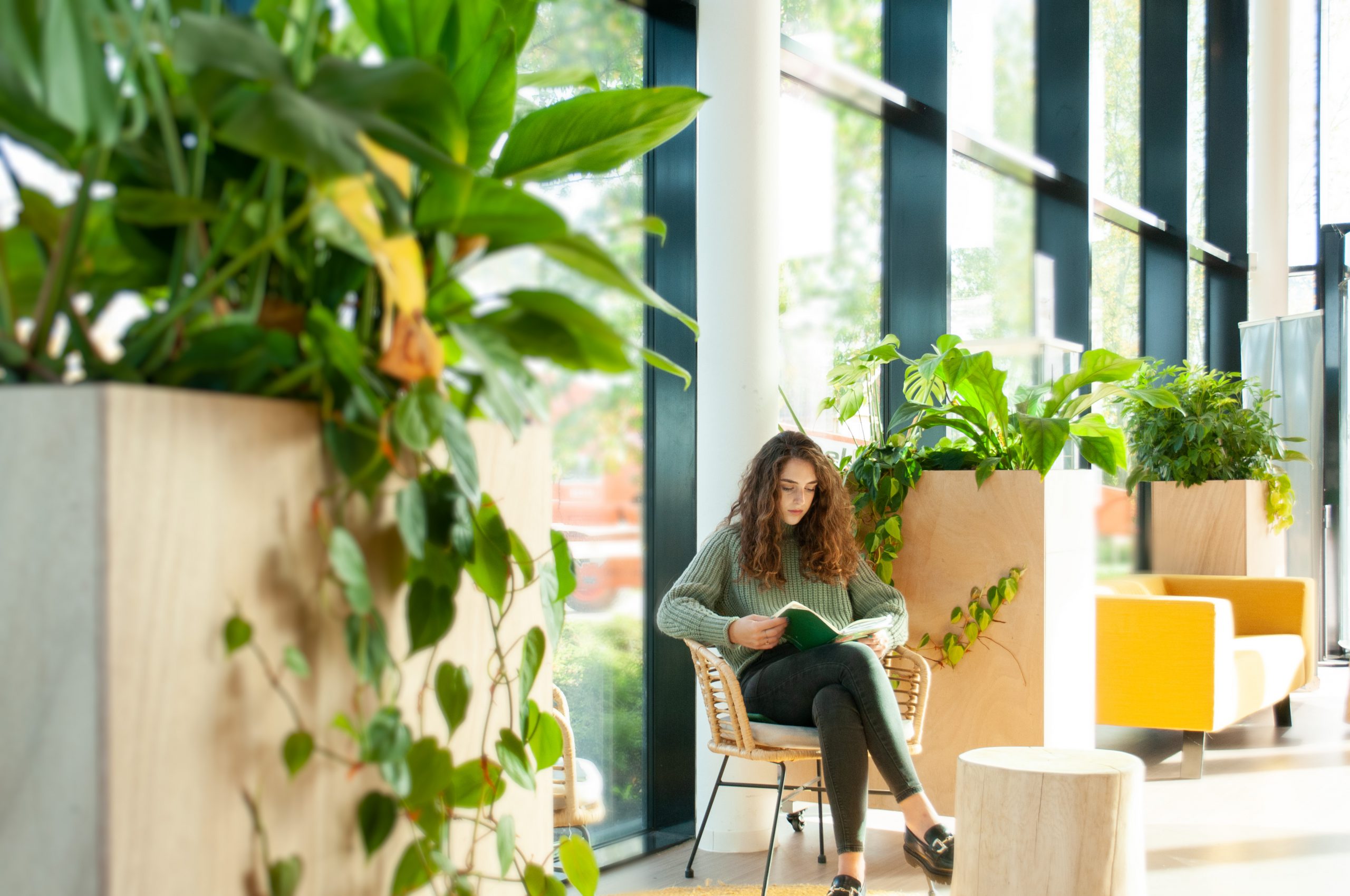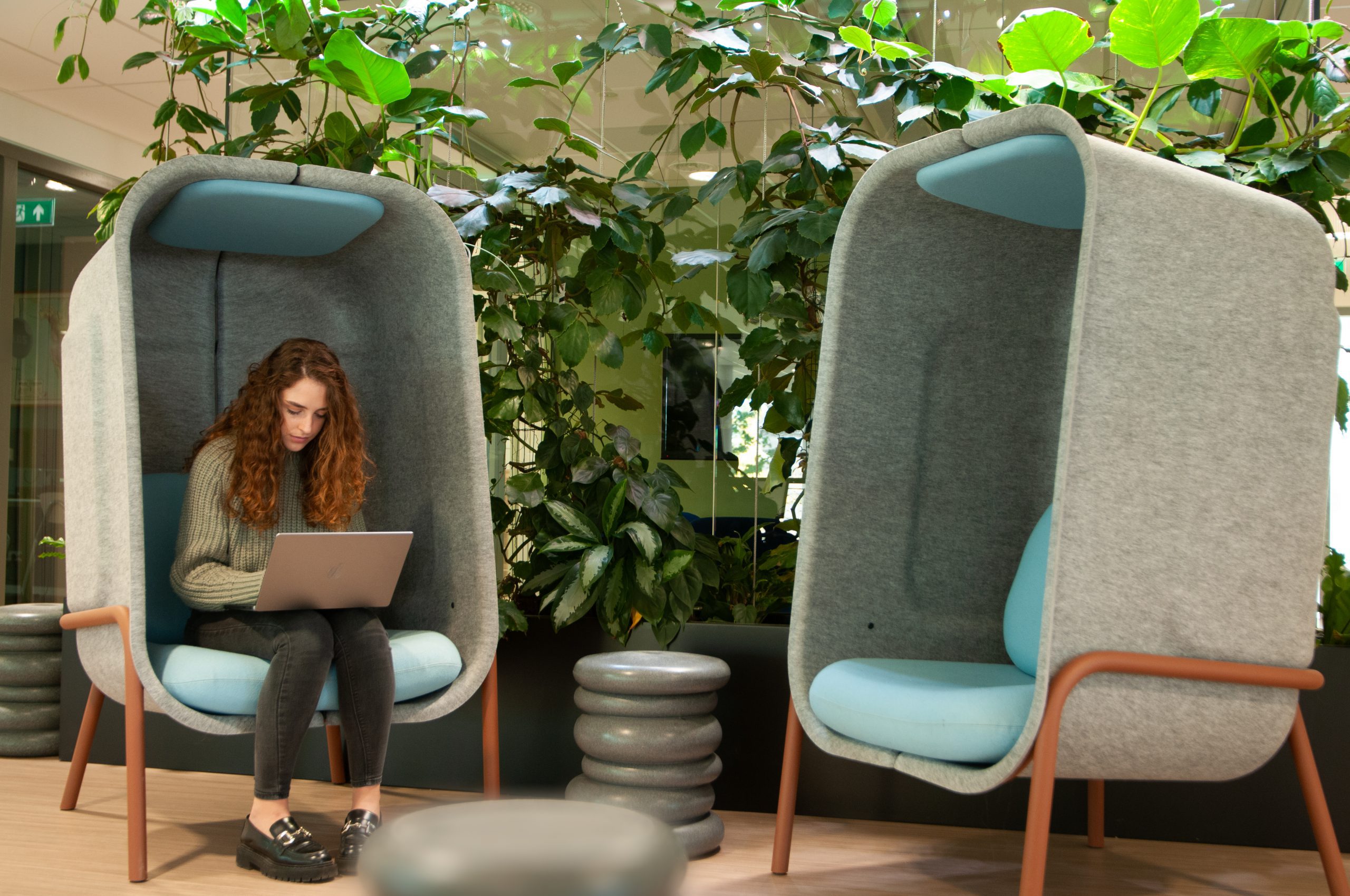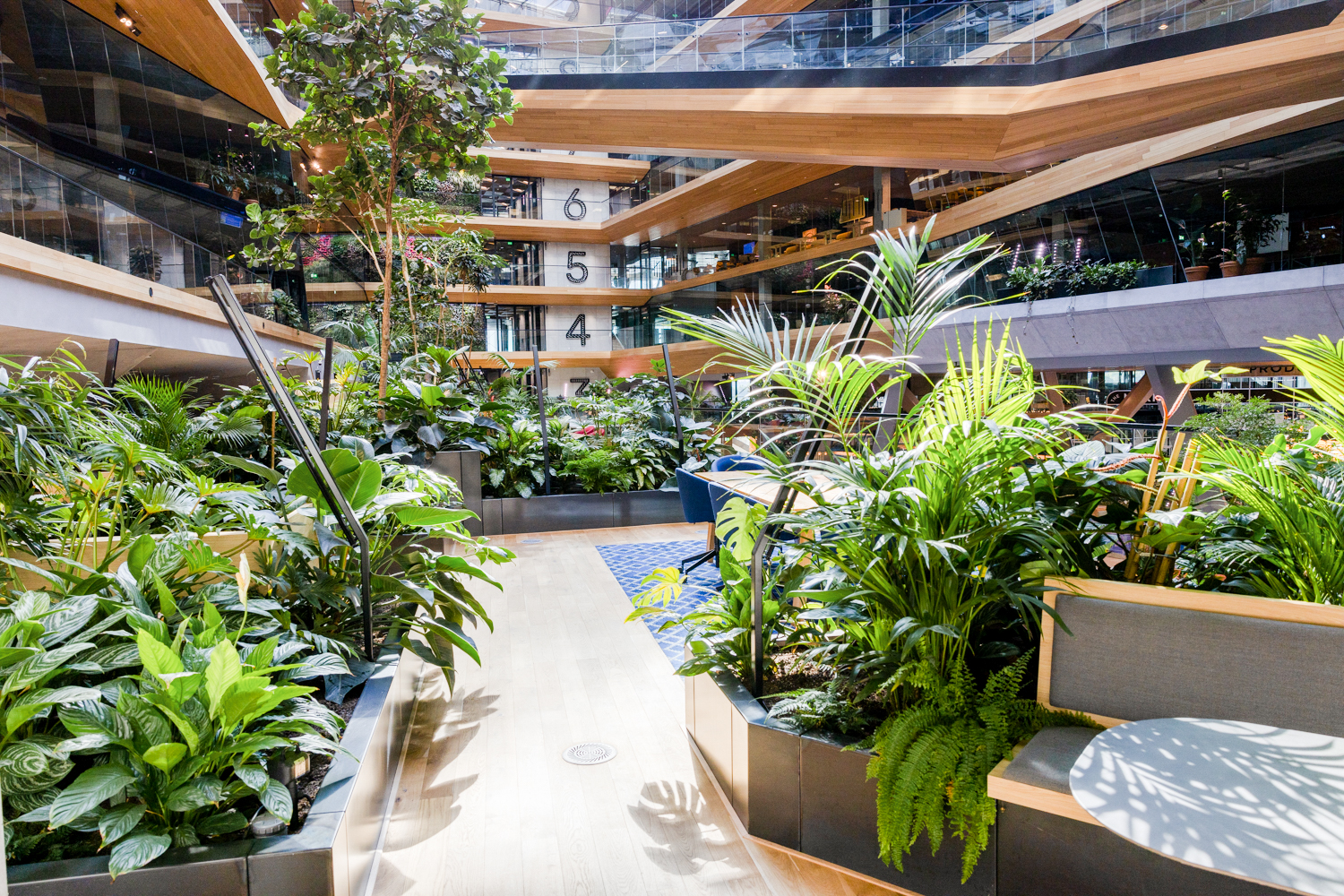Aeres Hogeschool | Almere
Category
Interior Garden DesignClient: Aeres Hogeschool
Green Architect: MOSS
Location: Almere, The Netherlands
Construction Year: 2021
Project: Biophilic design on the interior
Green maintenance & installation: Koninklijke Ginkel Groep
Photo credits: Jagrit Vij
_______________
MOSS implemented the green layer to help transform the Aeres College of Applied Sciences in Almere, into a sustainable nature-inspired learning environment. The project testifies the power of biophilic design in improving the well-being and academic performance of students. Aeres College is the first school in the Netherlands to apply for the Platinum WELL certificate and is the first green school in The Netherlands.
–
MOSS’ green input on the upper floors includes the green roof terrace or the use of natural materials such as upcycled wood and natural light. The experience of the green roof and the use of natural recycled materials, was further enhanced by MOSS’ work contributing to its overall status as energy neutral and climate-adaptive.
–
The green elements have improved the aesthetic appeal of the campus and contributed to the building’s climate-adaptive status. The greenery has provided opportunities for the students to improve their general well-being by 15%, while creating a sense of calmness on the campus.
–
The success of the green project at Aeres College has been reflected in the positive feedback from the students, faculty, and visitors to the building.
_______________
Press:














